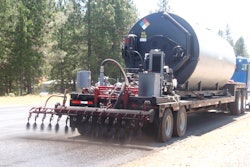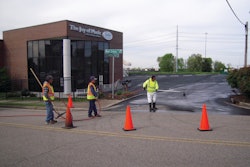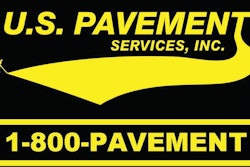After an unusually cold spring in many parts of the country, the sealcoating season seems now to be in full swing everywhere. One way to measure the success of a season is a high demand for your sealcoating services. Professionalism and customer care are the hallmarks of any successful business. In the sealcoating business, professionalism and customer care mean following the practices that have been proven to maximize the quality of the sealcoating job and, with a job done right, customer satisfaction. The focus of this column is to remind applicators about some good practices to follow in any sealcoating job.
(subhead) Protect yourself and your employees
Make sure you and your applicator teams are familiar with any product specifications and information distributed by the supplier of the product used on each job, including the Material Safety Data Sheet (MSDS). Make sure your applicator teams are properly outfitted for the job, including wearing appropriate clothing, gloves and, if conditions warrant, a hat and face shield. Your sealcoat supplier may recommend other protections as well – following manufacturer’s recommendations is an important good practice. Ensure that your employees are protected is as key to a successful job as checking that your equipment is in working order and that there are no leaks.
(subhead) Protect the environment
While planning the project, talk to the customer and visit the site to identify any natural resources or possible environmentally sensitive areas that are priorities for protection. Use storm drain barriers and block to keep the emulsion on the asphalt surface. Sealcoats are water-based emulsions that cure over time. The length of curing time varies with temperature and humidity. Typically, product suppliers include information about curing times with product specifications. If it rains too soon after application, a wash off can occur. DO NOT APPLY SEALCOAT IF RAIN IS IN THE FORECAST (a 24-hour forecast window is usually safe, but follow your supplier’s recommendations).
In the past 5 years, PCTC is aware of only two wash off events. One was at the University of New Hampshire storm water engineering facility – it rained within a day after the late-season (cool temperatures combined with high humidity) application of UNH’s 2-year sealcoat storm water runoff experiment began. The second occurred when an unanticipated thunderstorm developed a few hours after application, which leads to the reminder to BE AWARE OF THE CHANCE OF THUNDERSTORMS. A week or two after application, sweep the sealcoated area to remove any loose particles. Never dispose of leftover emulsion down a drain or a storm sewer or any body of water. Dried sealer can be disposed of as industrial waste. When in doubt about storage or disposal of excess product, ask your supplier.
(subhead) Protect your customer
Give your customer clear instructions about how long to wait before allowing light and, if appropriate, heavy vehicles to use the newly sealcoated surface. Clean up after completion of the job, and don’t leave excess emulsion or unapplied dry sealcoat on your customer’s property without permission. Communication with your customer is the key to avoiding misunderstandings about the do’s and don’ts of freshly sealcoated surfaces.
Follow these practices and you’ll be on the way to quality jobs and satisfied customers.




















